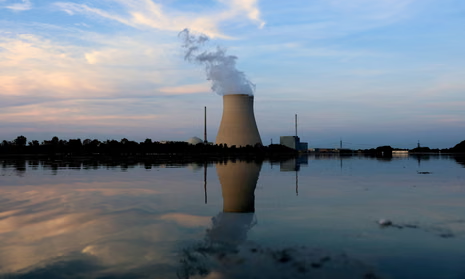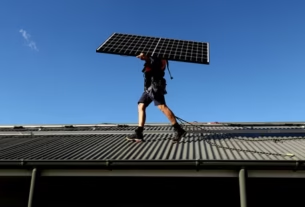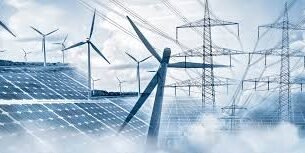Project Synopsis
One of the biggest battery storage complexes in Germany is being built on a former nuclear power facility in Philippsburg by the energy company EnBW. The 400 MW installation and 800 MWh capacity of the proposed system are enough to supply about 100,000 families’ daily electricity needs.
🧠 Mission: Grid Balancing
Supply and demand must be balanced as the system incorporates additional solar and wind energy. Peter Heydecker, a board member of EnBW, claims that the battery system will dispatch power during periods of low generation or high demand and store excess renewable energy at peak output.
This facility is part of a two-tier strategy: large-scale batteries for short-term variability plus hydrogen-ready gas power plants to ensure continuous supply during extended low-renewable periods.
Advantage of the Strategic Site
A TransnetBW substation that links to the Ultranet corridor, a high-voltage transmission line intended to transport wind-generated electricity from northern Germany to the industrial south, is well situated adjacent to the Philipsburg complex.
EnBW guarantees effective energy capture during high generation and delivery during demand peaks by placing the battery at this intersection.
The town has been an essential part of Germany’s energy infrastructure for many years, and this project guarantees that it will continue to play a key role in the country’s energy transition, said Stefan Martus, the mayor of Philippsburg.
Timetable and Requirements
Progress will be possible while decommissioning is underway because the new storage facility will be constructed on land far from the old reactor facilities. Pending final investment decisions, EnBW is now finalizing technical, financial, and regulatory approvals, with operations anticipated by mid-2027.
🔍 Why This Project Is Revolutionary Upcycling Infrastructure:
Revitalizing a former nuclear plant to support the integration of renewable energy sources.
Improves Grid Stability: Reduces curtailment by offering firming capacity during varying renewable output.
Scalable Strategy: Shows how flexible gas plants and battery storage can be used to balance both temporary and long-term supply shortages.
Strategic Footprint: Makes use of key energy hubs and high-voltage transmission infrastructure.
🌐 Greater Importance
An important step toward enabling countries to sustain renewable energy systems by repurposing retired nuclear or fossil fuel-based infrastructure is this endeavor. Germany is lowering its dependency on thermal backup and bolstering renewable resilience by incorporating large-scale battery storage at key grid nodes.
The project serves as a powerful model for other nations negotiating the energy transition, demonstrating how asset reuse, location strategy, and scalability come together to provide resilient, affordable sustainable power solutions.
Source : sustainability




